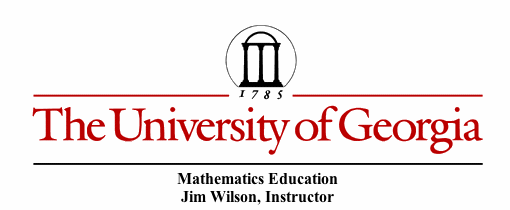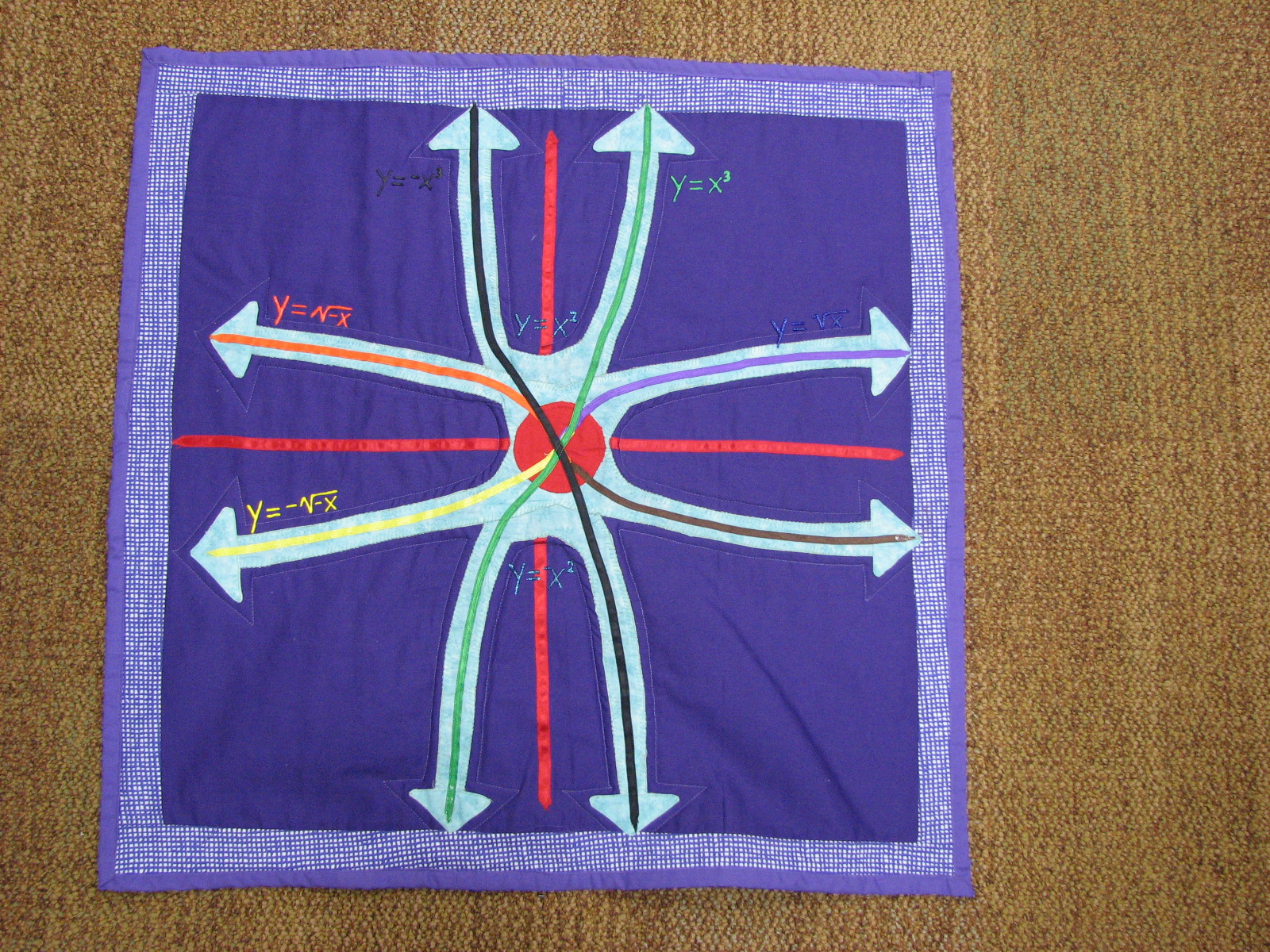

Valerie Russell
Unit 1 Functions
By Ann, Nidya Javaid, Aaliyah Hale, Yessica Martinez, and Quandra Davis

![]() Our quilt design was based on Unit 1.
The design consists of 2 parabolas and 4 square root functions. It also includes 2 cubic functions. We chose our colors because we thought they fit well together. The bright parabola really compliments the dark purple background. The border also fits well with the rest of the design. We chose a light blue color for the parabolas so it would pop out against the dark background. The border is there as a compliment not a prominent figure.
Our quilt design was based on Unit 1.
The design consists of 2 parabolas and 4 square root functions. It also includes 2 cubic functions. We chose our colors because we thought they fit well together. The bright parabola really compliments the dark purple background. The border also fits well with the rest of the design. We chose a light blue color for the parabolas so it would pop out against the dark background. The border is there as a compliment not a prominent figure.
We started out with many complications in the beginning. Before deciding on Unit 1, we were going to do Unit 6 and use the discriminate as the main theme of our design. After much frustration, we decided to settle on capturing what we learned about functions (parabolas, cubic, and square roots) a part of Unit 1. We had to come up with a design that incorporated input from everyone in our group. We asked ourselves, "How can we bring all these functions into one?"
The cloth was and ribbons were purchased separately by three of us. After getting the materials we cut out the fabric from our pattern created on large post-it paper. Getting started was the hardest part because there were so any things to do. Once we divided up our roles it sort of came together.
Having access to the iron and cutting board needed to cut out everything for our quilt wasn't easy. Aaliyah accidentally got burned while we were ironing open the seams. We became impatient while waiting to use the cutting board and decided to use our scissors. Not being master cutters we had uneven slanted edges. Ms. Russell made us re cut everything making sure our measurements were exact on opposite sides.
Creating this quilt gave us a better understanding of the functions we studied. We had to understand the value of translations in creating patterns and what happens to functions when the negative sign appears in different places. We began by creating four quadrants with ribbon for the x and y axes and a red dot for the origin. If you know how to translate one function the others will follow the same pattern. You just need to know what the parent function looks like.